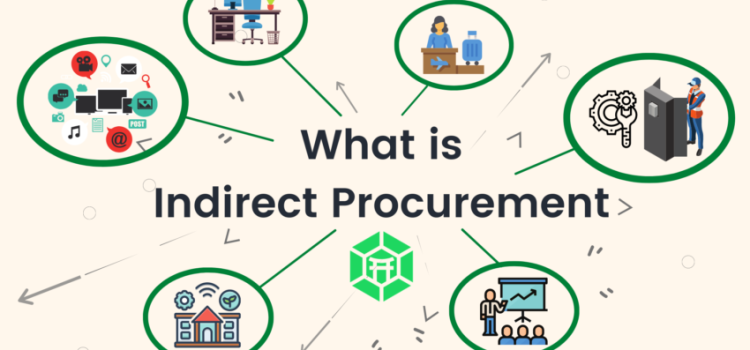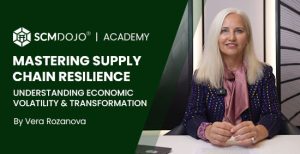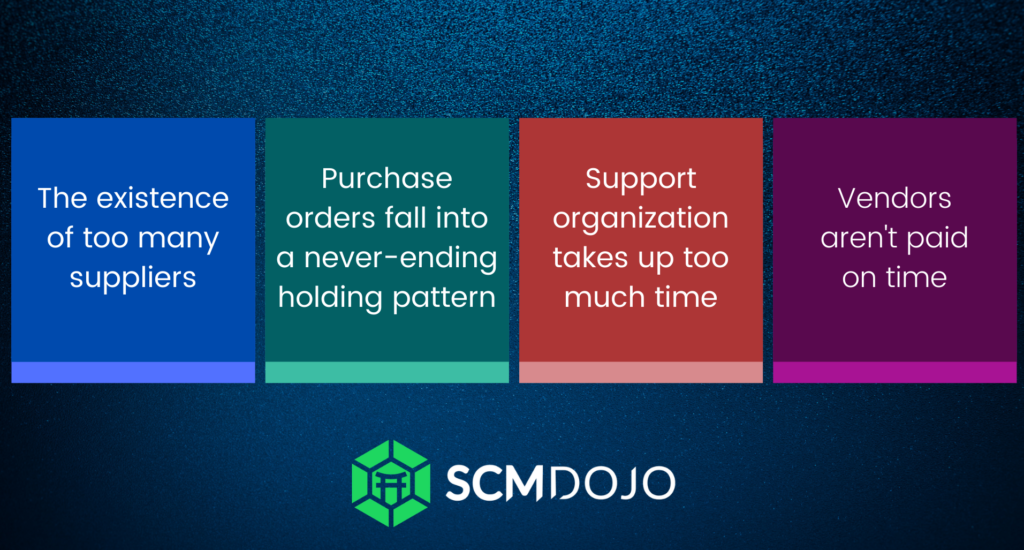What is Indirect Procurement? I have discussed this topic briefly with Procurement Expert Richard Beaumont in this episode of The Supply Chain Show. In this blog, we dig deep to answer these questions.
Topics Covered:
- What is indirect procurement or indirect procurement definition
- Indirect procurement categories
- Indirect procurement strategy
- Indirect procurement spend – How to Manage
- Indirect procurement best practices
Knowing that procurement is a complex business function that varies from an organization to another, and is unknowingly linked to many aspects of the company’s organizational structure, revenue, cost, and production are the direct results of purchasing activities. In my blog PURCHASING VS PROCUREMENT – KEY DIFFERENCES I have explained the evolution of purchasing to procurement and their respective definition. Which will set the context of the topic here.
In recent years, the strategic importance of purchasing has increased and has often been the source of competitive advantage (Sitar, 2012). Without the purchase and procurement of goods, materials, and/or services, there will be hardly any manufacturing business. As a general industry practice, Procurement is segregated into Indirect Procurement and Direct Procurement. However, in my opinion, Indirect procurement is a diverse and crucial component of procurement that has been largely ignored when it comes to procurement content due to representing only a small portion of manufacturing firms’ expenditures in most cases.
What is indirect Procurement? Indirect Procurement Definition
Indirect Procurement can be defined as:
“Non-revenue-generating expenses, or expenditures that do not relate directly to the product or service being sold” (Cox et al.,2005)
Richard Beaumont – Procurement Expert, says
“The stuff that you procure that doesn’t go into the goods and services that you sell to your customers. However, its definition could be different depending on the type of your activity sector”
When I was doing my research to write this article I was surprised by the scarcity of the content available in academia and industry on this topic. One of the reasons could be the confusing terms like “Indirect Procurement” or “Indirect Spend”, a term that can refer to any number of goods or services. Problems with defining indirect spend make it difficult to develop strategies to control indirect spending.
In fact, if there is no indirect procurement function, the company will not be able to operate in an efficient manner. Usually, indirect purchases account for 15% to 27% of the company’s total revenue.
On the other hand, indirect expenses refer to the materials, services and maintenance costs required to operate the business. Thus, both are essential to the operation of the company, and there can be no existence without one. However, although the two teams are basically purchasing, their methods and responses are quite different.
Direct Procurement Vs Indirect Procurement (Brief Distinction):
The ratio between direct procurement and indirect procurement expenditure varies between industries and individual enterprises. Certain industries (such as manufacturing) are highly dependent on direct procurement, while service-oriented companies rely more on indirect procurement.
“Direct procurement can be defined as revenue-generating expenditures, or expenditures that relate directly to the product or service being sold” (Cox et al.,2005)
Direct procurement has been studied more frequently in the literature and is far better understood in the industry, for many reasons (de Boer, Holmen, & Sitar, 2003;)
Direct Procurement refers to spending on goods, materials and services, which can increase profits, performance and competitive advantage. Indirect procurement is the maintenance, goods and service expenditures required for daily operations that will not directly affect the company’s profitability.
- Examples of Direct Procurement: Raw materials, Machinery, Mechanical parts for manufactured goods, etc.
- Examples of Indirect Procurement: Professional Services, MRO, HR related services, Software used by the company, Maintenance, Utilities, Advertising and Marketing spend, etc.
“If you want to read more examples of indirect procurement have a look at this article of Procurement Tactics.”
When we consider direct procurement and indirect procurement, we find that direct procurement is related to obtaining goods, materials, and services, which can be used to increase profits, competitive advantages, and company performance. Indirect procurement is related to the purchase of goods and services for internal use and any costs related to maintenance that enable daily activities to continue.
However, when we approach the difference between these two types of procurement, we note some obvious differences in terms of the following areas:
- How to manage supplier relations
- How to deal with an inventory
- How to manage the business procurement structure
Indirect Procurement Categories
Indirect Procurement count a number of categories that include :
- Marketing-related services (media buying, agencies)
- Professional Services (consultants, advisers)
- Travel Management Services (Travel desk office)
- IT-related services (hardware, software)
- HR-related services (recruitment agencies, training)
- Facilities Management and office services (Telecoms, furniture, cleaning, catering, printers)
- Utilities(gas, electricity, water)
- Consumables (Grease, Oil, etc.)
- MRO (Maintenance, Repair, and Operations)
- Capital Goods (Plant and machinery)
- Fleet Management
Indirect Procurement Strategy
Van Weele (2005) research found that indirect purchases account for 80% of all purchases with respect to a number of transaction while representing only 20% of spend. Indirect procurement, therefore, consists of a high frequency of low-value purchases, which requires significant resources from the procurement organization.
An optimized indirect purchasing strategy would therefore be required to better utilize the available resources. This would lead to cost avoidance by reduction of internal processing times rather than hard savings through a reduction in the purchase price.
Richard says: “Indirect spend tends to be pretty high-valued, it tends as well to have a very low level of interest generally in the business. However, it can have a great focus and a big impact.
To manage it well, it is important to take into consideration information and systems since we will be facing complicated contracts and also about how we can make it efficient.”
Watch the full episode below.
Cox et al. (2005) in his research found that around 10 percent of companies lacked any strategy at all for managing indirect spend, and that many selected their strategies simply on hunches rather than empirical evidence. Hingorani (2010) highlights the difficulty and importance of analyzing indirect costs.
A lack of procurement strategies for indirect spending leads to issues such as maverick purchasing or purchasing goods and services outside of established contracts or procedures (Karjalainen, Kemppainen, & van Raaij, 2009). Additionally, many indirect procurement strategies focus solely on reducing purchase price, rather than looking at the costs to the whole system (Bailey & Helms, 2007; Bechtel & Patterson, 1997).
To be effective, modifying indirect procurement strategies requires a combination of powerful digital tools, process optimization, and investment in change management. Fortunately, your purchasing team can use the right technology and proactive methods to make these three products work together.
Indirect procurement strategies require a deep and detailed understanding of your supply chain and supplier relationships, the company’s competitiveness and profitability goals, and the practices and tools required to streamline processes to achieve optimal performance and ROI (Return On Investment).
It is important to mention the following priorities to be considered when implementing an indirect procurement strategy:
Automation :
Process automation through e-procurement solutions or the use of robotic process automation (RPA) is seen as an area that has become more and more important in recent years.
However, the maturity of the company depends on the tools involved. Although 82% of indirect procurement decision makers stated that e-procurement is an important or even important part of their strategy, RPA seems to be far less advanced, with only 34% of respondents claiming to have implemented e-procurement.
Innovation :
Indirect procurement professionals are good in promoting innovation, and they believe that suppliers are the main drivers of innovation (51%). Suppliers also rely heavily on the participation of internal teams to propose innovative ideas or solutions, thereby creating more value.
Cost Control :
Not surprisingly, cost control has been and still, will remain one of the main goals of the procurement department. The main methods used so far are still:
- Supplier negotiation
- Pooling/bundling of purchases
- Specification adjustment
- TCO (Total Cost of Ownership) approach
- Change supplier
Value Creation :
Creating value for stakeholders (internal customers, management, suppliers, etc.) is still the top priority of the indirect procurement team. However, it seems that the focus now is to determine and measure the achievement of goals in this area.
Responsible procurement :
The concept of CSR (Corporate Social Responsibility) has not yet been integrated into the company’s strategy in terms of indirect procurement. However, professionals know that whether it is the origin of the product, the manufacturing conditions or the use of child labor, this is an area of improvement that needs to be addressed, which makes it the second priority.
“As long as we value automation more than talent development, we should not be surprised that not all our people are keeping up with the technological change.” Nina Bomberg, Sourcing Professional at SEG Automotive
Indirect Procurement Spend – How to Manage
Richard says: “It is around the stakeholder’s management and how to support them in order to build a requirement able to help you get the right solutions from the market.
In addition, the owner can help you identify the key players in defining what you need (legal are a great example).
There is a bunch of stakeholders in the business that you can help as a great procurement facilitator in order to identify the requirements”
Ignoring indirect procurement spend might cause damage to your enterprise, leading consequently to overspending, reduced visibility, and insufficient control over the supply chain.
In fact, it is true that procurement professionals are able to better manage the indirect spend of their companies.
For this, there are some interesting ways to manage indirect procurement spend:
- Invest in Appropriate Technology:
It is worth investing in software tools, such as cloud-based procurement solutions, to support more accurate and efficient purchases.
With good data, the automation of the process will enable your purchasing team to effectively implement your new strategy. It will also provide real-time visibility into all indirect spending within the enterprise.
- Improve Visibility and Transparency :
Indirect spend is known for being scattered throughout the organization, and it operates beyond the purview of procurement. This usually extends to large contracts, such as company catering, employee travel or IT services.
Procurement must fully understand the expenditures of their organization. This means consolidating all indirect spend into categories mentioned above and suppliers. The key to this, the preferred supplier list will help you improve the efficiency of your supply chain and enable more favorable supplier contract terms, such as volume discounts.
- Develop a Strategic Sourcing Plan :
Organizations that want to improve their indirect procurement processes must focus on developing strategic sourcing plans for direct and indirect spend.
First, you need to identify savings opportunities in the supply chain. Then, check where you can build more meaningful collaborative supplier relationships.
Next, conduct an in-depth analysis of all indirect spend. This will help to develop a plan that includes organizational goals, market research and indirect supplier performance standards.
- Partner with a Group Purchasing Organization :
Establishing a purchasing partnership with the Group Purchasing Organization (GPO) is another strategy for solving the challenges associated with indirect expenditures. GPO can help you balance your indirect expenses and reduce supplier risk, while saving you time, money, and energy.
Indirect Procurement Best Practices
Richard has also given precious advice for indirect procurement optimization saying :
“ The tail spend in indirect procurement is a big challenge. A precious piece of advice could be to look deeply at the spending from the biggest to the smallest tail and decide how far you can simply get it off our desk, for example, how you move to self-service, technology, outsourcing, the creation of a dedicated team, etc. Whatever the models that will work for you, you don’t want your team tied up with day-to-day integrity of dealing with the small stuff, so get that gone.”
As it might seem clear to procurement professionals, the procurement function needs to establish, follow and implement best practices to ensure that everyone in the organization not only understands the need for these changes but also understands how their actions create value and save costs for the company.
Proactive Change Management :
Ensuring full recognition at all levels of the organization is crucial. It is important to provide educational materials that directly establish links between new systems and new processes, improve competitive performance and save costs.
It will be helpful to identify and train employees of the new system and ask them to provide advice and guidance to employees in other parts of the company.
In addition, choosing a software vendor who understands the needs of change management is very important as well, such as investing in training before, during, and after the implementation of the new process.
Integration of Procurement with Finance :
This is very valuable when the supplier system is integrated with the main procurement solution. It is easy to track and analyze spend and performance data from internal and external sources, and then further contextual analysis through the perspective of industry and market intelligence to develop strategic expenditure and procurement plans.
Auditing has also been improved because data can be automatically cross-checked, and all transactions can be automatically captured and provided to the purchasing and accounting departments.
In addition, by directly linking procurement to finance, senior management has direct access to data analysis and dashboards that can show cost savings and create value through improved processes, competitive advantages gained through partnerships and shared programs.
Invest in the Right Software Tools :
With the support of modern cloud-based procurement solutions, you can complete all tasks needed to optimize direct and indirect procurement faster, more accurately, and more efficiently.
Automation and Artificial Intelligence (AI) and centralized data management, hierarchical access to mobile devices by all stakeholders (not only the procurement team, but also all your business units and supplier access rights through the use of the supplier portal) ; you provide the tools needed to effectively execute the new procurement strategy.
Richard has also added that:
“We can focus on the big stuff by get off our desk the small stuff “.
While we are focusing on best practices, we should also tend to avoid the below 4 mistakes which are commonly related to Indirect Procurement.
Conclusion
Regardless of your company’s situation, the strategic and methodological approach to the procurement of indirect goods and services is crucial. Supervision must be carried out in order to ensure the best deployment of resources and processes.
Knowing that focusing on indirect procurement is able to achieve cost reductions from low to high single digits since it involves a lot of skills and expertise, you are able to increase productivity through the indirect procurement team which is your best choice.
The procurement of indirect goods and services covers almost all aspects of the company. The scope of indirect procurement includes IT, capital expenditures, freight and logistics, facilities, marketing, legal and human resources, outsourcing contracts, marketing spend, utilities, consumables, temporary workers, and travel, etc.
To conclude, whether you are a member of the procurement team of a service-based growth company or a procurement professional who wants to create more value for an established manufacturer, it is necessary to keep in mind that you need to find a way to simplify all procurement processes. By investing in the right technical tools and developing feasible category management, supply chain management, and overall procurement strategy processes, you can take advantage of opportunities to save, direct and especially manage your team’s time, skills and energy to truly effective strategic procurement.
Top Trending Procurement Courses
Reference:
Sitar, C. P. (2012). Purchasing Management of Business Services in the Contemporary Knowledge-Based Economy. Annales Universitatis Apulensis: Series Oeconomica, 14, 286-293.
Cox, A., Chicksand, D., Ireland, P., & Davies, T. (2005). Sourcing Indirect Spend: A Survey of Current Internal and External Strategies for Non-Revenue Generating Goods and Services. Journal of Supply Chain Management, 41, 39-51
de Boer, L., Holmen, E. and Pop‐Sitar, C. (2003), “Purchasing as an organizational design problem: the case of non‐product‐related items and services”, Management Decision, Vol. 41 No. 9, pp. 911-922
Weele, van, A. J. (2005). Purchasing and supply chain management : analysis, strategy, planning and practice. (4th ed. ed.) Thomson Learning.
Hingorani, N. (2010). Domino Effect. Risk Management, 57, 56-58+60+62.
Karjalainen, K., Kemppainen, K., & van Raaij, E. M. (2009). Non-Compliant Work Behavior in Purchasing: An Exploration of Reasons behind Maverick Buying. Journal of Business Ethics, 85, 245-261
Bailey, G. J., & Helms, M. M. (2007). MRO Inventory Reduction-Challenges and Management: A Case Study of the Tennessee Valley Authority. Production Planning & Control, 18, 261.
Bechtel, C., & Patterson, J. L. (1997). MRO Partnerships: A Case Study. International Journal of Purchasing and Materials Management, 33, 18-23.
About the Author- Dr Muddassir Ahmed
Dr MuddassirAhmed is the Founder & CEO of SCMDOJO. He is a global speaker, vlogger and supply chain industry expert with 17 years of experience in the Manufacturing Industry in the UK, Europe, the Middle East and South East Asia in various Supply Chain leadership roles. Dr. Muddassir has received a PhD in Management Science from Lancaster University Management School. Muddassir is a Six Sigma black belt and founded the leading supply chain platform SCMDOJO to enable supply chain professionals and teams to thrive by providing best-in-class knowledge content, tools and access to experts.
You can follow him on LinkedIn, Facebook, Twitter or Instagram







